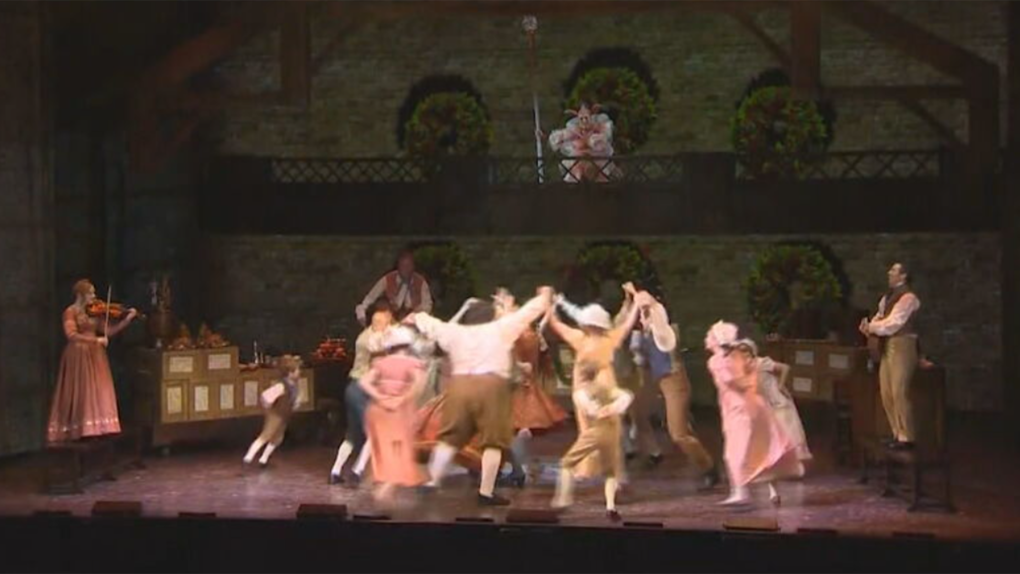Calgary's art scene struggling with attendance in post-pandemic world
Calgary’s arts scene is getting creative as it struggles to boost its post-pandemic attendance.
Multiple local productions have noted a steady dip in the number of tickets sold over the last four years. A lot of that can be chalked up to a COVID-19 lull, but the after-effects are still lingering.
“We used to sell over 100,000 tickets per season, and now we’re selling around 60,000,” Alberta Ballet's artistic director Francesco Ventriglia told CTV News.
“As long as we want to give everything to the public, the public needs to play that part and come into the theatre and help us exist.”
It’s not just dance. Smaller-scale concerts have also seen an attendance dip, and larger productions aren’t immune, either.
Theatre Calgary’s executive director says the 2023 season saw a 40 per cent traffic decrease compared to numbers before the pandemic.
“It’s been a really rough return for the audience post-COVID,” Maya Choldin said. “People’s habits changed. People’s economic situations changed.”
Choldin is right.
Countless reports cite less disposable income among the lower and middle classes, which means there’s a limited amount of recreational spend for the same number of competing art events.
Yes — many of those events have gotten more expensive. But often, there’s a legitimate reason.
Choldin points out at Theatre Calgary, labour costs have skyrocketed, along with stage and costume design price tags.
The theatre is in a unique situation where it is able to eat some of the losses thanks to government and private funding, but it’s not enough to keep prices where they were a decade ago.
Calgary Arts Development president Patti Pon admits the rising costs have hurt the arts: but part of the attendance dip isn’t a shock.
“It wasn’t something that we anticipated was going to happen — like as quickly as the doors closed, the ability to recover from that was not going to happen as quickly,” she said. “So here we are a couple years later and I think we’re only just coming out of the relief phase.”
Pon believes the environment offers a unique opportunity for the city’s creatives.
“I think some of the things to let go of is our assumptions about how it was before,” she said.
“(Now, people) want to know ‘what they will experience when they attend your events? And that includes before you ever walk into the hall or onto the field or whatever that might be.”

Pon says that experience is paramount. So too is understanding and adapting to ever-changing audience habits.
Both Theatre Calgary and Alberta Ballet have shifted their focus to promotions to pull in new members.
Choldin is convinced those who come to one show will be back, and so the TC For All Program has lowered certain seat prices to attract a new type of fan.
“That is the idea that everyone’s welcome, regardless of whatever barriers — real or perceived — people might see,” she said.
Alberta Ballet has a subscription program that can cut costs — and is now focused on the next generation. It believes young people may not know what they’re missing.
Ventriglia agrees: recovery now is all about what happens after tickets are bought.
“It’s our responsibility I think to inspire the public to come back and be with us and to be their entertainment,” he said.
“We are trying to hug them into an experience that is beautiful.”
CTVNews.ca Top Stories

Canada could impose tariffs on U.S. steel, orange juice in response to Trump threat
Canadian officials are narrowing a list of American products to target in the event the federal government must respond to U.S. tariffs on Canadian goods, CTV News has confirmed.
Convicted Jan. 6 rioter arrested as fugitive in Whistler, B.C.
An American citizen convicted of participating in the Jan. 6, 2021, riot on Capitol Hill who said he was seeking asylum in Canada has been arrested as a "fugitive from U.S. justice," according to authorities.
Can the U.S. really make Canada the 51st state?
Talk of Canada becoming the 51st American state has raised an existential question on this side of the border: Could it be done? Could the maple leaf make way to the stars and stripes? According to several experts, it may be possible, but not painless.
L.A. wildfires continue to devastate area, Canada prepared to offer expertise
A series of wildfires are searing through the Los Angeles area, forcing many to evacuate their homes. Here's everything that happened throughout Jan. 8.
'True when I said it, true today': former Canadian PM Harper pushes back against Trump on social media
Former Canadian Prime Minister Stephen Harper doesn’t find president-elect Donald Trump’s jibes about Canada becoming the 51st U.S. state very amusing.
Ontario Premier Doug Ford says he is 'OK' after OPP vehicle he was in was 'sideswiped' in Highway 401 collision
Ontario Premier Doug Ford was uninjured after an OPP vehicle he was travelling in was involved in a collision on Highway 401 earlier today.
At least 60 University of Guelph students sick as 'cluster of illness' hits residence
The University of Guelph is dealing with what they are calling a ‘cluster of illness’ among students living in residence.
Energy minister 'committed' to consumer carbon tax as he considers Liberal leadership
Energy and Natural Resources Minister Jonathan Wilkinson says he would be 'committed' to the consumer carbon tax should he become Liberal leader and prime minister, despite the policy’s unpopularity.
New ranking suggests Canada passport among 'top 5 losers' in the world
A new global ranking may raise doubts about Canada's reputation of being open to other countries.
































